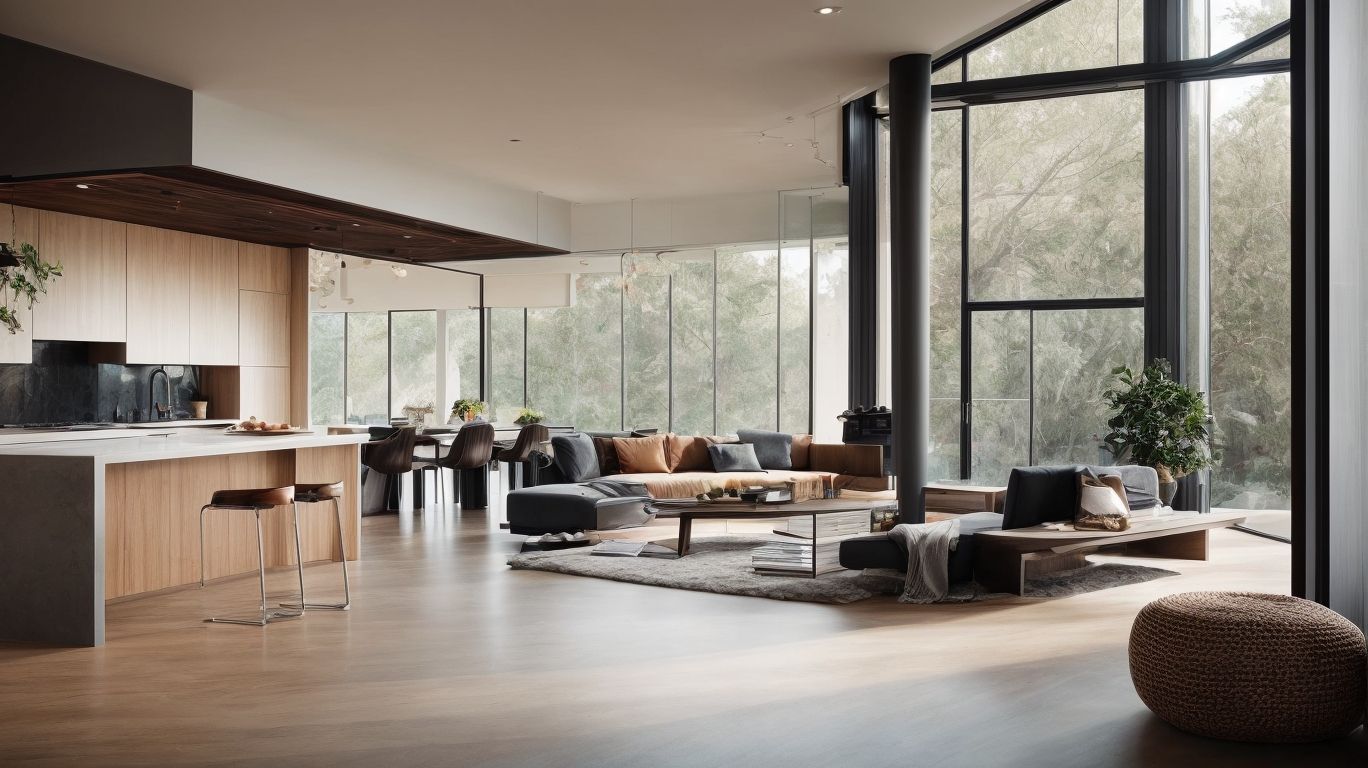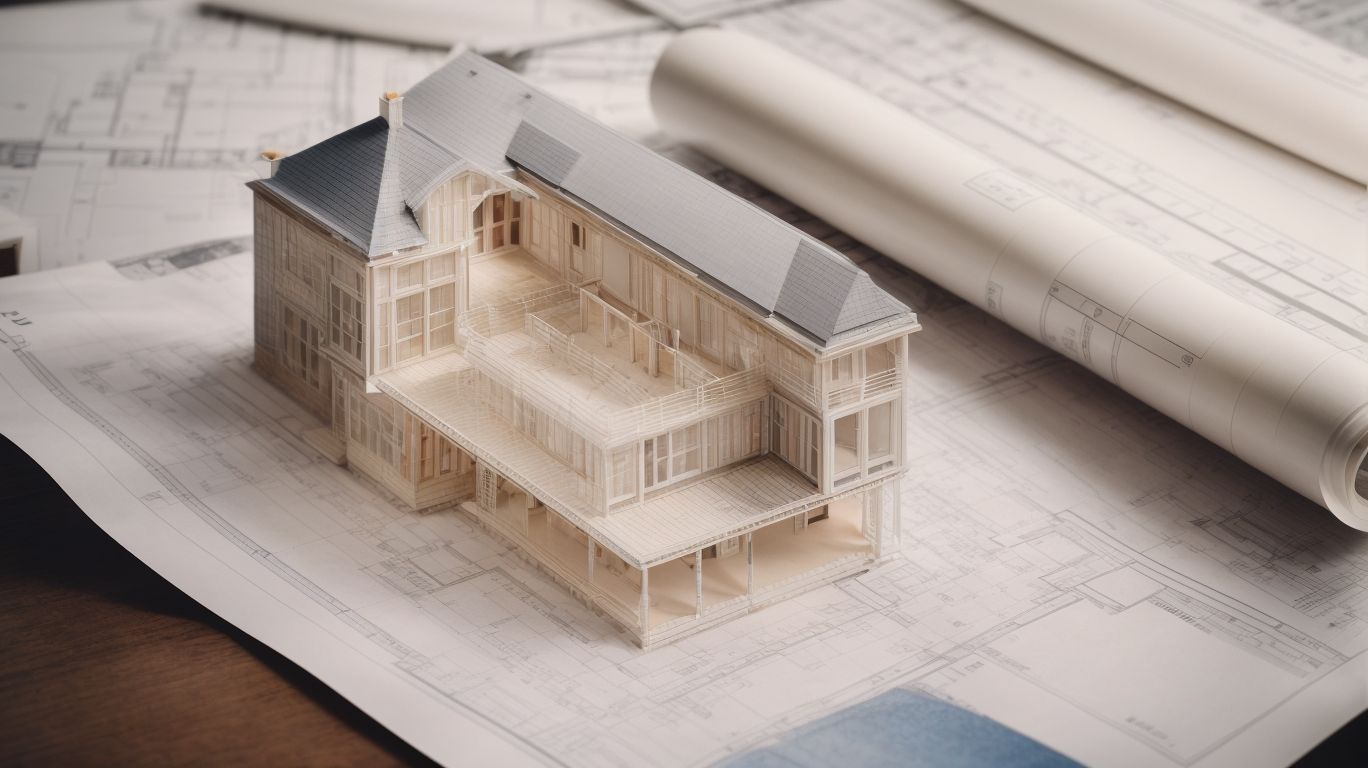
Cutting-Edge Materials in Structural Home Remodeling
In the realm of home remodeling, the use of cutting-edge materials has revolutionized the structural integrity and aesthetic appeal of modern residences. From traditional materials like wood, concrete, and brick to the innovative applications of carbon fiber, fiber-reinforced polymer (FRP), and glass fiber reinforced concrete (GFRC), homeowners now have a plethora of options to consider when embarking on a remodeling project.
The integration of these advanced materials not only enhances the strength and durability of the structure but also offers benefits such as lighter weight, faster construction time, and improved energy efficiency. As with any pioneering technology, there are challenges to overcome, including the higher cost and specialized installation techniques. In this comprehensive guide, we will delve into the world of cutting-edge materials in structural home remodeling, exploring their advantages, challenges, and practical considerations for homeowners looking to incorporate these innovations into their own projects.
What Is Structural Home Remodeling?
Structural home remodeling involves the use of innovative and sustainable building materials and technologies to enhance the durability, energy efficiency, and aesthetics of a home’s design.
This approach not only improves the overall functionality and appeal of the property but also contributes to reducing its environmental impact. Incorporating modern construction techniques and energy-efficient design principles enables homeowners to create spaces that are both beautiful and eco-friendly.
Utilizing sustainable materials such as bamboo flooring, recycled glass countertops, or solar panels, homeowners can significantly decrease their carbon footprint while increasing the value and appeal of their homes. Structural home remodeling plays a vital role in advancing the construction and renovation industry towards a more sustainable and environmentally conscious future.
Why Is Structural Home Remodeling Important?
Structural home remodeling is vital as it not only enhances the strength and performance of a structure but also contributes to creating energy-efficient, eco-friendly, and modern living spaces through the integration of cutting-edge materials and innovative technologies.
This type of remodeling plays a crucial role in maintaining the durability and longevity of a home, ensuring that it can withstand the test of time and environmental factors. By utilizing eco-friendly materials and modern construction techniques, such as passive solar design or high-efficiency insulation, homeowners can significantly reduce their carbon footprint while enjoying lower energy costs.
Sustainable design principles, like utilizing reclaimed or recycled materials, contribute to a more environmentally conscious approach to remodeling.
What Are the Traditional Materials Used in Structural Home Remodeling?
Traditional materials such as wood, concrete, and brick have been cornerstones of structural home remodeling for decades, offering strength, efficiency, and performance in various construction and renovation projects.
These time-honored materials have stood the test of time, providing not only durability but also versatility in design and application. Wood, with its natural charm and flexibility, adds warmth and character to any home, while concrete’s robustness makes it ideal for foundations and structural elements.
Brick’s timeless aesthetic appeal and fire-resistant properties make it a popular choice for both interior and exterior renovations. Understanding the enduring significance of these materials is essential in ensuring successful and long-lasting construction and remodeling projects.
Wood
Wood has long been a staple in structural home remodeling, valued for its natural aesthetics, versatility, and insulation properties, making it a popular choice in various renovation and construction projects.
Its durability and strength provide structural integrity, while its ability to be crafted into various shapes and forms enables architects and designers to showcase their creativity. From sturdy timber beams and columns to elegant hardwood floors and intricate wood paneling, the applications of wood in home remodeling are truly diverse.
Its sustainability and eco-friendly nature align with the growing trend towards environmentally conscious building materials, further enhancing its relevance in modern construction and renovation practices.
Concrete
Concrete stands as a foundational material in structural home remodeling, prized for its exceptional strength, durability, and versatility, playing a pivotal role in modern construction and renovation projects.
It has the ability to support heavy loads and withstand environmental pressures, making it a popular choice for building foundations, walls, and floors. Its adaptability allows for seamless integration with steel reinforcements, creating robust structures capable of enduring diverse climatic conditions.
The advancements in concrete technology have led to innovations such as fiber-reinforced concrete and high-performance concrete, expanding its applications in construction and enhancing its overall strength and resilience.
Brick
Brick has been a fundamental material in structural home remodeling, known for its enduring strength, thermal insulation properties, and timeless appeal, making it a versatile component in construction and renovation endeavors.
Its ability to regulate indoor temperature and reduce energy costs sets it apart from traditional materials like wood or concrete. Brick’s resistance to fire and moisture makes it a reliable choice for long-term durability, ensuring that homes remain structurally sound for generations. Its classic aesthetic appeal also adds charm and character to any residential design, creating a warm and inviting atmosphere within the living space.
What Are the Cutting-Edge Materials Used in Structural Home Remodeling?
Cutting-edge materials, such as carbon fiber, fiber-reinforced polymer (FRP), glass fiber reinforced concrete (GFRC), engineered wood, and insulated concrete forms (ICFs), are revolutionizing structural home remodeling with their innovative technologies and sustainable attributes.
By incorporating these advanced materials into construction, homeowners can benefit from enhanced durability, strength, and energy efficiency. The use of sustainable building materials not only reduces the environmental impact but also contributes to creating resilient and long-lasting structures. These modern construction techniques are reshaping the industry, offering a blend of aesthetics and functionality, and setting new standards for the future of architectural design and home construction.
Carbon Fiber
Carbon fiber is a high-performance material increasingly utilized in structural home remodeling due to its exceptional durability, strength-to-weight ratio, and versatility, redefining the possibilities for resilient and efficient construction solutions.
Its application extends beyond traditional construction materials, offering innovative solutions for reinforcing beams, creating strong and lightweight building components, and enhancing the overall structural integrity of homes. The use of carbon fiber in home remodeling provides a sustainable and long-lasting alternative to conventional materials, contributing to the evolution of cutting-edge construction methods and elevating the standard for durability and strength in building design.
Fiber-Reinforced Polymer (FRP)
Fiber-reinforced polymer (FRP) represents a sustainable and efficient material choice in structural home remodeling, offering superior strength, corrosion resistance, and design flexibility, driving innovation in sustainable construction practices.
Its applications in home remodeling extend to various structural elements such as beams, columns, and floor systems, where FRP’s lightweight nature aids in ease of installation and reduces the need for heavy machinery, contributing to eco-friendly design.
FRP’s durability and resistance to harsh environmental conditions make it an ideal solution for sustainable construction, reducing maintenance requirements and extending the lifespan of structural components.
Glass Fiber Reinforced Concrete (GFRC)
Glass Fiber Reinforced Concrete (GFRC) has emerged as a versatile material in structural home remodeling, combining modern construction techniques with exquisite aesthetics, offering lightweight, durable, and visually appealing solutions for architectural enhancements.
It has found significant applications in modern architectural designs, where its flexibility allows for intricate shapes and curves, seamlessly integrating with contemporary and traditional styles. GFRC’s sustainable properties further contribute to its popularity, as it is an eco-friendly option that promotes efficient use of resources. This cutting-edge material has become a go-to choice for architects and designers looking to push the boundaries of construction and achieve stunning, sustainable residential transformations.
Engineered Wood
Engineered wood stands as an eco-friendly and cost-effective material option in structural home remodeling, offering enhanced durability, stability, and design versatility, contributing to sustainable and modern construction solutions.
It is widely employed in various applications such as flooring, roofing, wall framing, and structural supports due to its superior strength and resistance to warping and shrinking. Its engineered nature allows for the efficient utilization of timber resources, reducing the demand for natural hardwood and promoting sustainable forestry practices. This makes it an ideal choice for environmentally-conscious homeowners and builders seeking to integrate cutting-edge materials and eco-friendly design into their projects.
Insulated Concrete Forms (ICFs)
Insulated Concrete Forms (ICFs) have gained prominence in structural home remodeling for their energy-efficient and insulating properties, providing enhanced comfort, durability, and sustainability, shaping the future of energy-efficient construction practices.
These cutting-edge materials serve as an innovative solution for homeowners and builders seeking to reduce energy consumption and create more comfortable living spaces. ICFs not only offer superior thermal performance but also contribute to airtight construction, minimizing heat loss and reducing the reliance on mechanical heating and cooling systems.
This shift towards energy-efficient design signifies a significant step in the sustainable building movement, emphasizing the importance of environmentally friendly construction practices.
What Are the Advantages of Using Cutting-Edge Materials in Structural Home Remodeling?
The use of cutting-edge materials in structural home remodeling offers a myriad of advantages, including increased strength and durability, lighter weight, faster construction time, and enhanced energy efficiency, elevating the performance and longevity of remodeling projects.
These advanced materials not only provide superior structural integrity but also contribute to sustainable building practices, reducing environmental impact. Their innovative properties enable the creation of sleek, modern designs while maintaining a strong focus on eco-friendly and durable solutions. Incorporating these state-of-the-art materials into home remodeling projects enhances the overall quality and resilience of the structure, ensuring that it stands the test of time and meets the evolving demands of sustainable construction.
Increased Strength and Durability
The integration of cutting-edge materials results in structures with increased strength and durability, ensuring long-term resilience and performance in structural home remodeling and renovation projects.
These innovative materials, such as carbon fiber, advanced composites, and high-strength alloys, contribute to the structural integrity of homes, providing enhanced resistance to environmental factors and potential wear and tear. Their lightweight nature allows for easier installation and reduces the overall load on the building, leading to cost savings and extended longevity.
By incorporating these modern technologies, homeowners can benefit from a structurally robust and sustainable living environment, enhancing the value and safety of their properties.
Lighter Weight
Cutting-edge materials offer the advantage of lighter weight in structural home remodeling, facilitating more efficient construction processes and reducing structural loads, contributing to overall construction efficiency and performance.
This reduction in structural weight allows for easier handling and installation of materials, leading to quicker construction timelines and potential cost savings. Utilizing lighter-weight materials can result in improved energy efficiency and reduced environmental impact, aligning with sustainable construction practices.
The use of these advanced materials also enables greater flexibility in design possibilities, allowing for creative and innovative architectural solutions that enhance the overall aesthetics and functionality of the remodeled structures.
Faster Construction Time
The utilization of cutting-edge materials leads to faster construction times in structural home remodeling, leveraging innovative technologies and construction methods to streamline project timelines and enhance overall efficiency.
These advanced materials, such as carbon fiber composites and high-strength steel alloys, significantly reduce installation and assembly timelines, contributing to overall project efficiency. Through the integration of state-of-the-art construction techniques, like prefabrication and modular building systems, the process of home remodeling becomes expedited, allowing for quicker completion and handover.
This rapid construction pace not only accelerates the turnaround time for remodeling projects but also minimizes disruptions to homeowners’ daily routines, highlighting the profound impact of these materials on optimizing construction timelines.
Energy Efficiency
Cutting-edge materials play a pivotal role in enhancing energy efficiency in structural home remodeling, contributing to eco-friendly designs and superior thermal insulation, promoting sustainable living environments with reduced energy consumption.
These innovative materials, such as recycled steel, bamboo, and reclaimed wood, are revolutionizing the construction industry. They are not only durable and versatile but also have lower environmental impact during production and installation. Incorporating energy-efficient glazing, advanced insulation materials like aerogels, and cool roof systems further aids in reducing heat loss and minimizing the need for excessive heating and cooling, thus lowering carbon footprint and energy costs. These sustainable building materials are creating a wave of positive change in the way we approach home remodeling, prioritizing both environmental responsibility and energy savings.
What Are the Challenges of Using Cutting-Edge Materials in Structural Home Remodeling?
Despite their benefits, the utilization of cutting-edge materials in structural home remodeling presents challenges, including higher cost, limited availability, and the need for specialized installation techniques, impacting their adoption in construction and renovation projects.
These advanced materials, such as carbon fiber composites and ultra-high-performance concrete, come with a premium price due to their innovative properties and manufacturing processes. This can significantly impact project budgets, making it essential for homeowners and contractors to carefully weigh the cost implications against the long-term benefits.
The limited availability of these materials may lead to longer lead times and potential delays in construction schedules, requiring meticulous planning and sourcing methods to ensure a smooth implementation. The specialized installation techniques demand skilled labor and specialized equipment, adding complexity to the remodeling process and potentially affecting overall project timelines.
Higher Cost
One of the primary challenges of using cutting-edge materials in structural home remodeling is the higher cost associated with these advanced and eco-friendly materials, potentially influencing project budgets and construction decisions.
The incorporation of innovative technologies and sustainable building materials, such as high-performance insulation, smart glass, and energy-efficient HVAC systems, can significantly elevate the upfront expenses of a renovation or construction project. Despite the long-term benefits in terms of energy savings and environmental impact, the initial investment required for these materials often leads to careful deliberation and decision-making by homeowners and contractors.
Balancing the desire for advanced materials with budget constraints is a critical aspect of navigating the complexities of modern home remodeling projects.
Limited Availability
Limited availability of cutting-edge materials can pose a significant challenge in structural home remodeling, affecting the procurement and accessibility of these advanced and sustainable construction and renovation materials.
This scarcity can cause delays in project timelines and increase costs as contractors may need to search extensively or pay a premium to source the required materials. The limited availability of these materials can also create a competitive environment, as multiple builders and homeowners vie for the same resources. This can result in a potential bottleneck in supply chains, leading to longer lead times and potential compromise on the original design and quality of the project.
Specialized Installation Techniques
The requirement for specialized installation techniques presents a challenge in the utilization of cutting-edge materials in structural home remodeling, necessitating expertise and engineering precision for their effective integration into construction and renovation projects.
These advanced materials, such as carbon fiber composites and ultra-high-performance concrete, are revolutionizing the construction industry with their superior strength and durability. Their unique properties demand careful handling and application.
For instance, the installation of carbon fiber reinforcement requires a thorough understanding of bonding methods and load distribution to ensure optimal structural enhancement. The use of specialized equipment and techniques for shaping and installing advanced materials underscores the need for skilled professionals capable of navigating the complexities of modern construction technologies.
How Can Homeowners Incorporate Cutting-Edge Materials in Their Home Remodeling Projects?
Homeowners can integrate cutting-edge materials into their remodeling projects by collaborating with architects, builders, and designers to explore sustainable and modern construction technologies that align with their vision for energy-efficient, durable, and innovative home improvements.
This approach allows homeowners to harness the potential of innovative materials such as recycled steel, bamboo, or reclaimed wood for structural elements. They can opt for advanced insulation materials, like natural wool or foam glass aggregates, to enhance energy efficiency. By embracing technologies such as 3D printing for custom fixtures or utilizing smart home systems, homeowners can create a modern and eco-friendly living space.
Engaging with professionals who specialize in sustainable building practices can bring valuable insights into the latest materials and construction methods, ensuring a successful integration of sustainability and innovation into their home projects.




No Comments